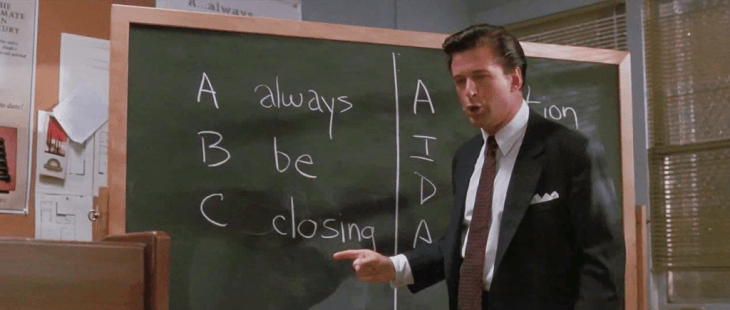Selling is a competitive sport, and quota-seeking salespeople are the athletes of that sport: They are scored and compared, there are frontrunners and underdogs and there are winners and losers. Confronted by today’s more informed customer who has readily available competitive, pricing and rating data, salespeople are facing unprecedented pressure to perform — they are expected to sell more — and faster.
HubSpot predicts that 34 percent of sales reps will miss their quotas in 2015, which makes 2016 a “make or break” year for those reps. And like top athletes who always arrive at a competition in peak performance shape, top salespeople will enter 2016 with a specific mindset. They won’t try to sell as much and to as many as possible. This is a hopeless pursuit: only a quarter of sales emails are opened, it takes 8-12 dials to connect with a buyer and callback rates are in the single digits. To be successful, salespeople must hone in on a composite of solutions that enable them to close more deals.
There are myriad tools that promise to boost sales performance, but the mindset of the salesperson is equally, if not more, important; the two work hand in hand in determining success. Embracing technology is one thing. The biggest challenge for salespeople will be navigating all the tools available and integrating them into a unified solution. An effective sales stack can’t consist of a haphazard group of disparate tools. Salespeople must develop a sales process that leverages their stack.
This process can’t be purchased from an outside supplier. To build a successful sales stack, salespeople must address the following eight competencies.
Pre-Contact (Lead Generation). Salespeople who don’t have time for manual prospecting (most fall into this category) and don’t want to outsource lead generation should incorporate third-party lead-generation tools into their sales stacks. Popular tools used today include Datanyze, ZoomInfo and InsideView.
Inbound (Predictive). Salespeople who aren’t generating enough inbound leads can strengthen their sales stack by incorporating inbound sales tools. Infer is one of the leaders in predictive lead scoring, with InsideSales, 6Sense, Lattice Engines and Leadspace constituting other popular options.
Outbound (Messaging). Salespeople who are lagging with outbound lead generation can bolster communication channels with prospective customers by incorporating into their sales stack tools such as ToutApp, Cadence by SalesLoft, Outreach.io and Yesware. Leading salespeople will also fuel their sales stack with email verification tools such as Kickbox.io, Rapportive, LiveHive and BriteVerify.com. These tools go a long way in reducing email bounce rates.
Analytics (To Measure The Health Of A Sales Funnel). To attain and sustain peak form, salespeople must constantly evaluate the health of their sales funnel (the steps required to sell a product or service). Pipedrive and InsightSquared are popular options, as they provide a valuable purview of the opportunities available to a sales team, as well as insight into which opportunities are most valuable.
Meetings (Demos). Salespeople who find themselves frustrated by product demos that don’t result in customer conversions should incorporate into their stack popular demo tools such as UberConference, Speakeasy and join.me.
Proposal (Configure Price Quote/E-Sign). No matter how successful a product demo is, what matters most is that the deal is ultimately closed. There are several sales stack options that reduce the friction of the buying process. Tools such as DocuSign or HelloSign are frontrunners today.
Customer Relationship Management (“CRM”). A company’s choice of CRM software significantly impacts their ability to measure sales performance. One is hard-pressed to encounter a salesperson that hasn’t used Salesforce. By no means is Salesforce the only CRM tool, but it’s the standard against which other CRM tools can be compared.
Hiring. An important, yet often overlooked, component of the sales stack is hiring tools. The success of a sales organization is dependent on its ability to build a cohesive team. SalesDrive offers a screening tool in the form of a sales aptitude test and is used by leading companies Marketo and Pearson Education to find and recruit talent. LinkedIn Recruiter and HireVue are other popular choices to help minimize the guesswork associated with hiring salespeople.
Selling, like athletics, should rely in part on a team that enables success. Salespeople and sales managers should consider hiring virtual assistants. Upwork, for instance, is the largest online workplace for finding freelancers. Upwork’s virtual assistants may be just what your organization needs to automate basic and tedious tasks.
Starting January 1, 2016, gyms everywhere will be crammed with people set on making 2016 the year they finally get in shape. The same holds true for sales organizations. What matters in the long term is how committed and strategically aligned your organization is to accelerate, and to follow through until the year’s end. For salespeople, 2016 will be a year where the winners will have built a cohesive arsenal of sales-acceleration tools. 2016 will be the year of the “sales stack.”
